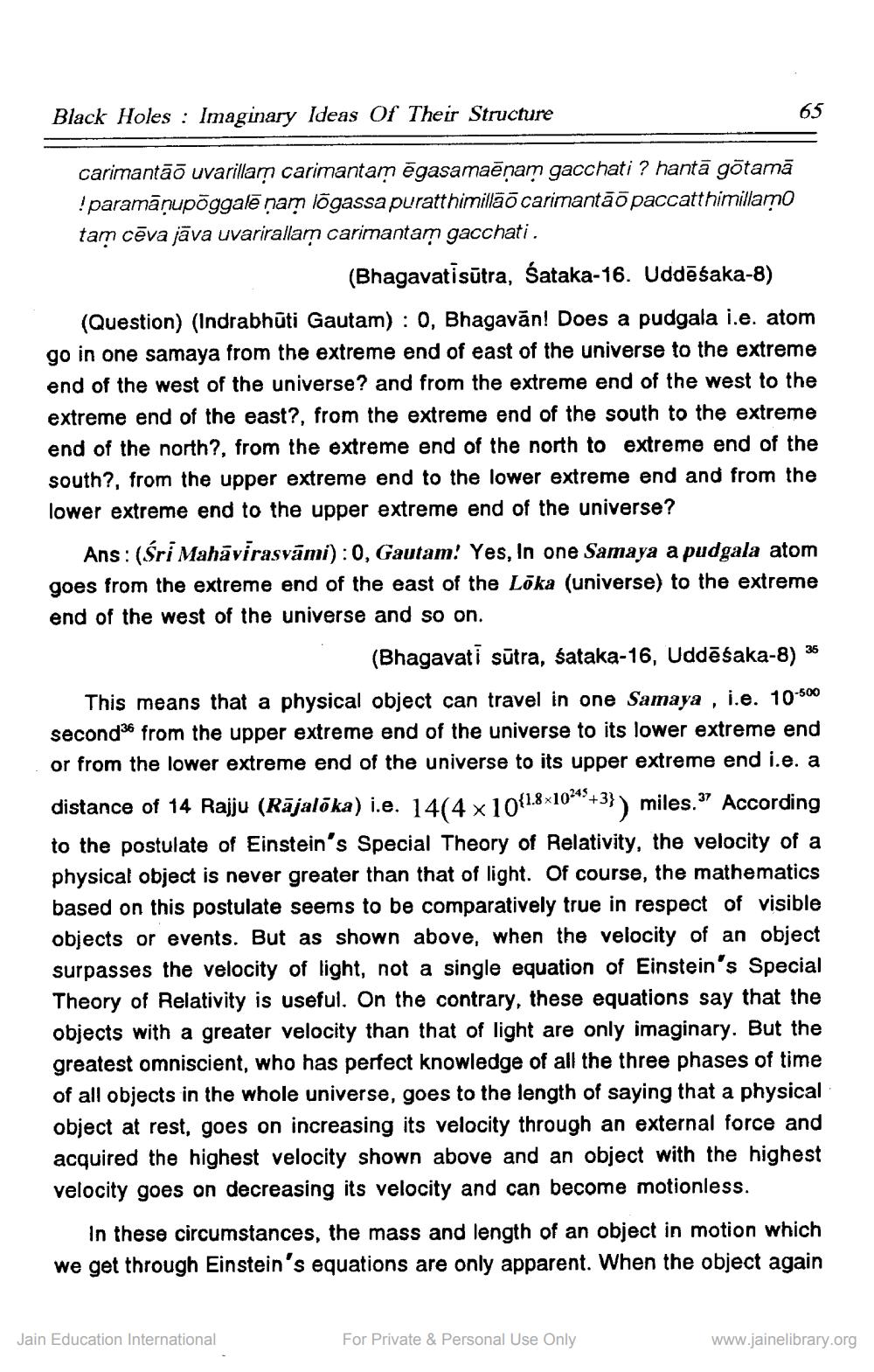________________
Black Holes: Imaginary Ideas Of Their Structure
carimantāō uvarillam carimantam ēgasamaēņam gacchati? hantā gōtamā !paramāņupōggalē nam logassa puratthimilläō carimantaō paccatthimillamo tam cēva jāva uvarirallam carimantam gacchati.
(Bhagavatisūtra, Śataka-16. Uddēśaka-8)
(Question) (Indrabhūti Gautam): 0, Bhagavan! Does a pudgala i.e. atom go in one samaya from the extreme end of east of the universe to the extreme end of the west of the universe? and from the extreme end of the west to the extreme end of the east?, from the extreme end of the south to the extreme end of the north?, from the extreme end of the north to extreme end of the south?, from the upper extreme end to the lower extreme end and from the lower extreme end to the upper extreme end of the universe?
65
Ans : (Śri Mahāvīrasvāmi) : 0, Gautam! Yes, In one Samaya a pudgala atom goes from the extreme end of the east of the Loka (universe) to the extreme end of the west of the universe and so on.
(Bhagavati sūtra, śataka-16, Uddēśaka-8) 35
This means that a physical object can travel in one Samaya, i.e. 10-500 second36 from the upper extreme end of the universe to its lower extreme end or from the lower extreme end of the universe to its upper extreme end i.e. a distance of 14 Rajju (Rājalōka) i.e. 14(4 × 10(1.8x10245+3) miles. According to the postulate of Einstein's Special Theory of Relativity, the velocity of a physical object is never greater than that of light. Of course, the mathematics based on this postulate seems to be comparatively true in respect of visible objects or events. But as shown above, when the velocity of an object surpasses the velocity of light, not a single equation of Einstein's Special Theory of Relativity is useful. On the contrary, these equations say that the objects with a greater velocity than that of light are only imaginary. But the greatest omniscient, who has perfect knowledge of all the three phases of time of all objects in the whole universe, goes to the length of saying that a physical object at rest, goes on increasing its velocity through an external force and acquired the highest velocity shown above and an object with the highest velocity goes on decreasing its velocity and can become motionless.
In these circumstances, the mass and length of an object in motion which we get through Einstein's equations are only apparent. When the object again
Jain Education International
For Private & Personal Use Only
www.jainelibrary.org




